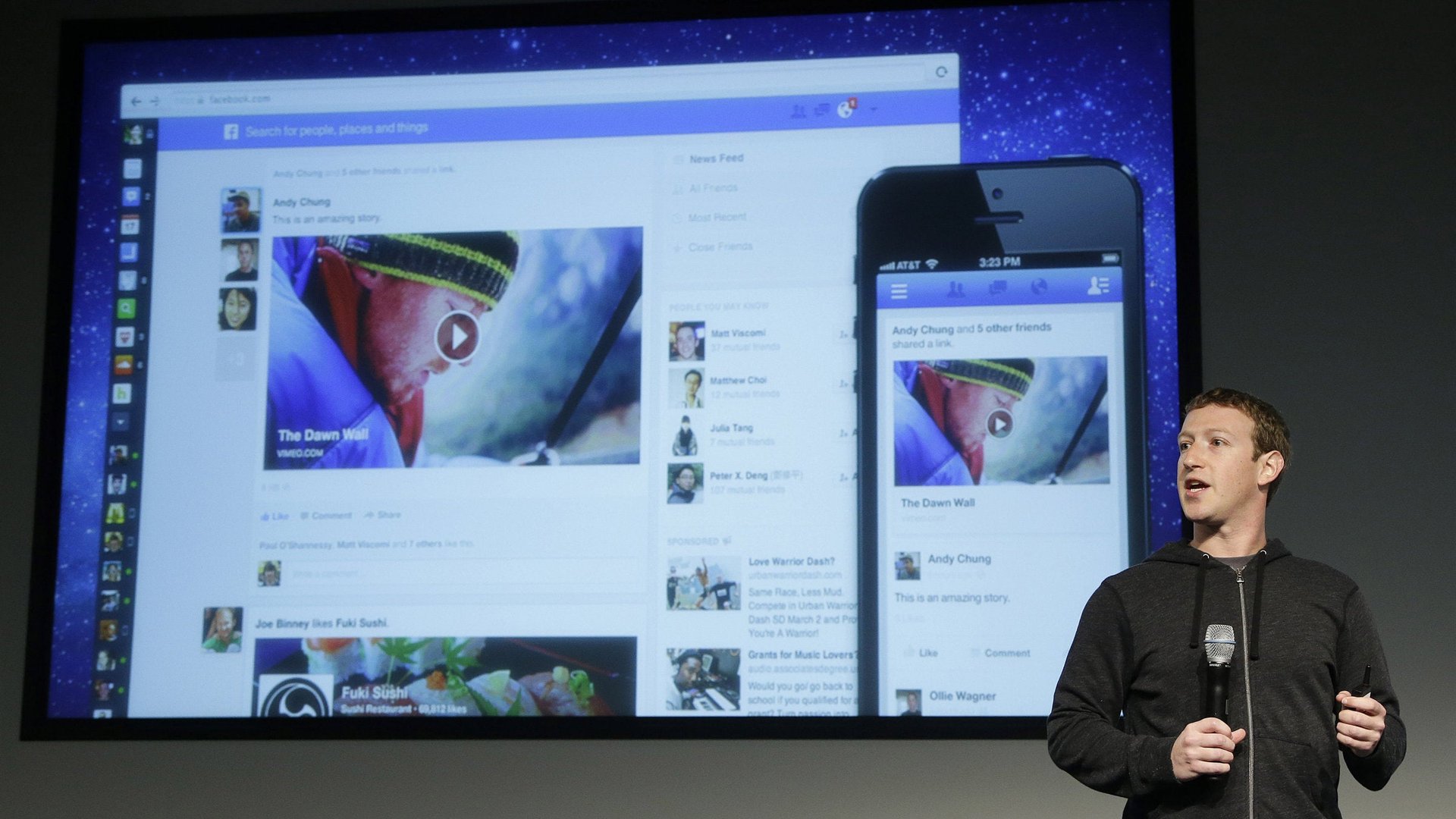Facebook reveals how its news feed works—again
People. They just don’t get it, do they? Facebook has been trying to explain for months now that no, it is not gaming its news feed and no, it’s not suppressing content that it hasn’t been paid to promote. The company says so clearly in the help pages, under a heading called “How News Feed Works“; it said so in October last year on a sister site aimed at ad agencies and marketers; and it said so again in November, when the Facebook called a bunch of journalists to its offices, sat them down, and had its staff draw big flowcharts on a whiteboard. And that’s just Facebook’s messaging. There are dozens of external sites run by “social media consultants” that answer the same question.


People. They just don’t get it, do they? Facebook has been trying to explain for months now that no, it is not gaming its news feed and no, it’s not suppressing content that it hasn’t been paid to promote. The company says so clearly in the help pages, under a heading called “How News Feed Works“; it said so in October last year on a sister site aimed at ad agencies and marketers; and it said so again in November, when the Facebook called a bunch of journalists to its offices, sat them down, and had its staff draw big flowcharts on a whiteboard. And that’s just Facebook’s messaging. There are dozens of external sites run by “social media consultants” that answer the same question.
But people don’t listen. So Facebook has launched a series of blog posts, catchily titled “News Feed FYI,” that it will post on its pages dedicated to small business. The inaugural post is—you guessed it—”a window into news feed.” Much of it goes over old ground. The feed is determined by an algorithm that determines what you see based on what you click, like and hide, how often you interact with a person or page, and various other little signals you unwittingly give Facebook that tell it what you’re interested in.
Much as Google’s search algorithms constantly change, Facebook’s feed is forever being fiddled with. Some updates are tiny and others more significant. The latest update, rolled out yesterday and detailed in the blog series, explains why users might see older posts bubbling up to the top of their feeds. If something is getting lots of likes and comments but a rushed Facebook user didn’t get around to scrolling past all the baby pictures and beach photos, the system will push it back to the top:
In a recent test with a small number of users, this change resulted in a 5% increase in the number of likes, comments and shares on the organic stories people saw from friends and an 8% increase in likes, comments and shares on the organic stories they saw from Pages…. The data suggests that this update does a better job of showing people the stories they want to see, even if they missed them the first time. For Page owners, this means their most popular organic Page posts [those posted by administrators of pages such as Quartz] have a higher chance of being shown to more people, even if they’re more than a few hours old. Advertisers should note, however, that this change does not impact how paid content appears in News Feeds.
The upshot: if you post interesting stuff, and people seem to like it, Facebook’s news feed algorithm will give you a helping hand. For regular users, that should mean a little less of the barrage of wedding photos that occupies Facebook every spring and summer. And maybe it will encourage businesses and social media managers to give some more thought to what they’re putting up. That’s a cheering thought.